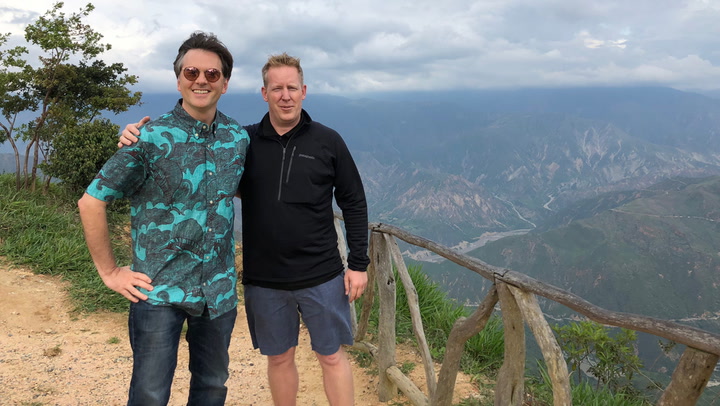The Magic of Colombia in Disney’s ‘Encanto’
“We heard magic runs in the streets there and we really felt that while we were there…”
Even though international travel is still complicated due to COVID-19, films filled with inspiration from around the world have provided the hope that any travel lover has been craving.
The latest film that makes us feel like we’ve landed in a new destination is Disney’s 60th animated movie, “Encanto.”
Set in the heart of Colombia, “Encanto,” released in late November, follows the life of Mirabel, a young girl who is the only one in her family without magical powers. Although she feels held back by her lack of powers, things take a positive turn when she learns she is the last hope to save her home.
:max_bytes(150000):strip_icc():format(webp)/Encanto-Directors-ENCANTO1121-952e00f9987e4a66bd0522565c64b477.jpg)
Directors Jared Bush and Byron Howard thankfully got to travel to Colombia before the pandemic. They shared insights into their trip and why they felt this South American country was the perfect backdrop for their film.
“We went down to see as much of the country as we could, and it really, really inspired us,” Howard said. “From that point on, it really became clear that Colombia was this crossroads of all of Latin America where culture comes together, and dance and tradition and families are beautifully blended ethnically. We just absolutely loved that.”
The two directors first traveled to Colombia in the spring of 2018 for initial research. While visiting major cities like Bogotá and Cartagena, and small villages high in the mountains and along the coast, they felt the presence of magic at every turn, which became a key theme in the film.
“The idea that magic is everywhere was something we really tried to incorporate into the story. We have this magical family, but to this town, they’re somewhat normal—this was something we wanted to bring in,” Bush explained.
Their trip was also filled with delightful culinary experiences, ranging from ajiaco (Colombian potato soup) in small villages to hot chocolate with cheese in Bogotá, fresh arepas—which also appear in the film—and even fat-bottomed ants in Cartagena.
Bush and Howard had planned to return to Colombia with their entire team in March 2020; however, they never made it back. Thankfully, friends made during their initial trip assisted with research by sending photos and other materials necessary for bringing their Disney story to life.
“One very important thing that happened on the original trip was that we made very good friends all across the country. And so, while we couldn’t go, we had amazing people there to help us take pictures, to take videos, to send samples, and to talk to us about fabric and textiles, and architecture,” Bush remarked, adding that the crew usually would have made another three trips if not for the pandemic. “It was a real group effort.”
Among the photos and videos collected, recordings of nighttime noises captured during their first trip were actually incorporated into the film.
“Colombia is the birthplace of magical realism… we heard magic runs in the streets there and we felt that while we were there—it’s hard to describe it,” Bush commented.
:max_bytes(150000):strip_icc():format(webp)/Encanto-Selfie-ENCANTO1121-1fb84709a59440468e5af04ad343a20c.jpg)
After visiting numerous regions, it became clear that the film would need to reflect the diverse dialects throughout Colombia. Understanding regional language variations played a vital role in character creation.
Nearly the entire cast is Colombian, with many members residing in Colombia. The Spanish version of the film exclusively features voice actors from the country.
For first-time visitors, the directors recommend the city of Cartagena for its rich culture and delicious food, Bogotá for its vibrant nightlife (and combating jetlag), and the enchanting Valle de Cocora for breathtaking nature, which also inspired the magical house, la casita, in “Encanto.”
“There is no shortage of good food or beautiful, warm, and welcoming places to see,” Bush concluded.




